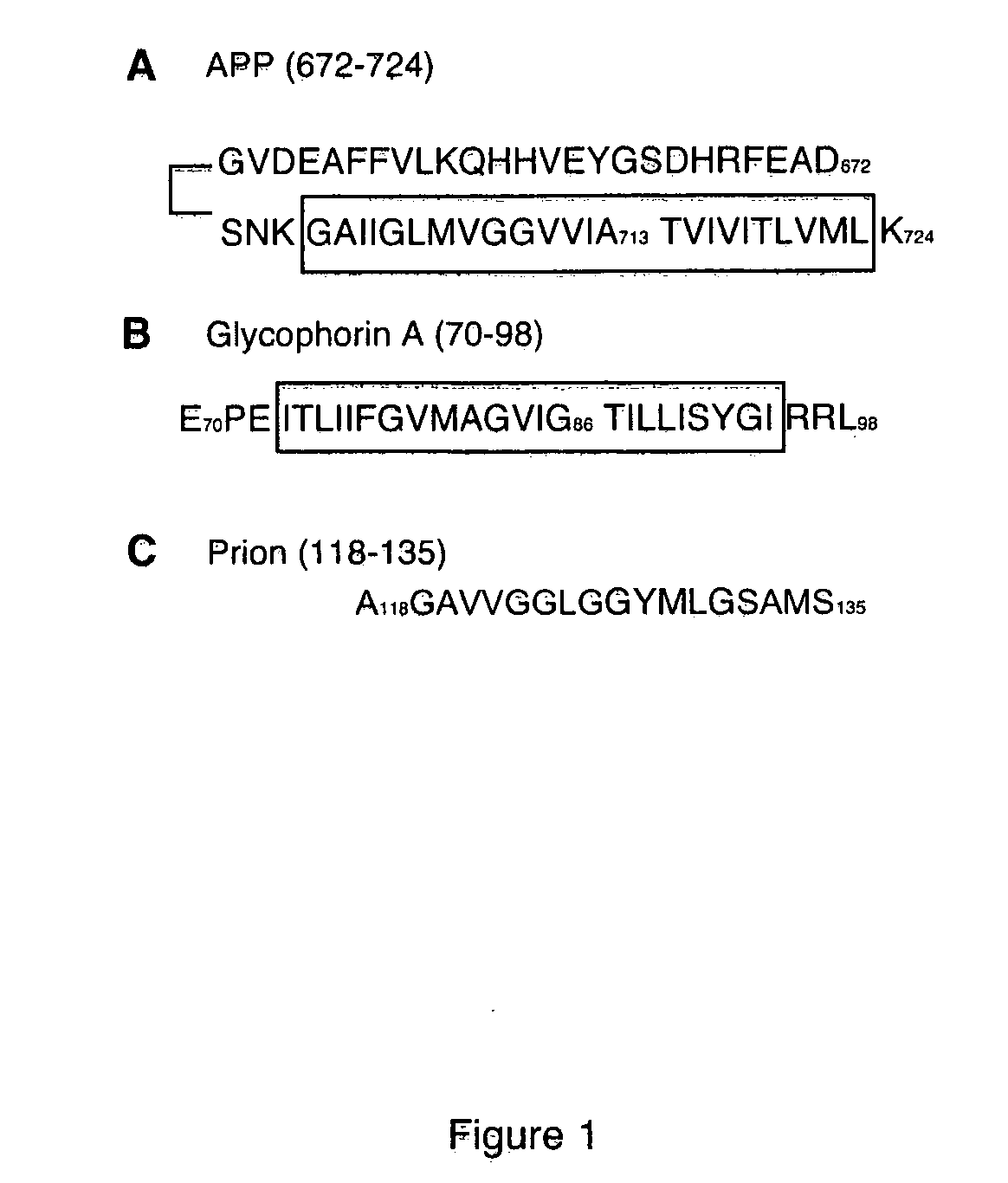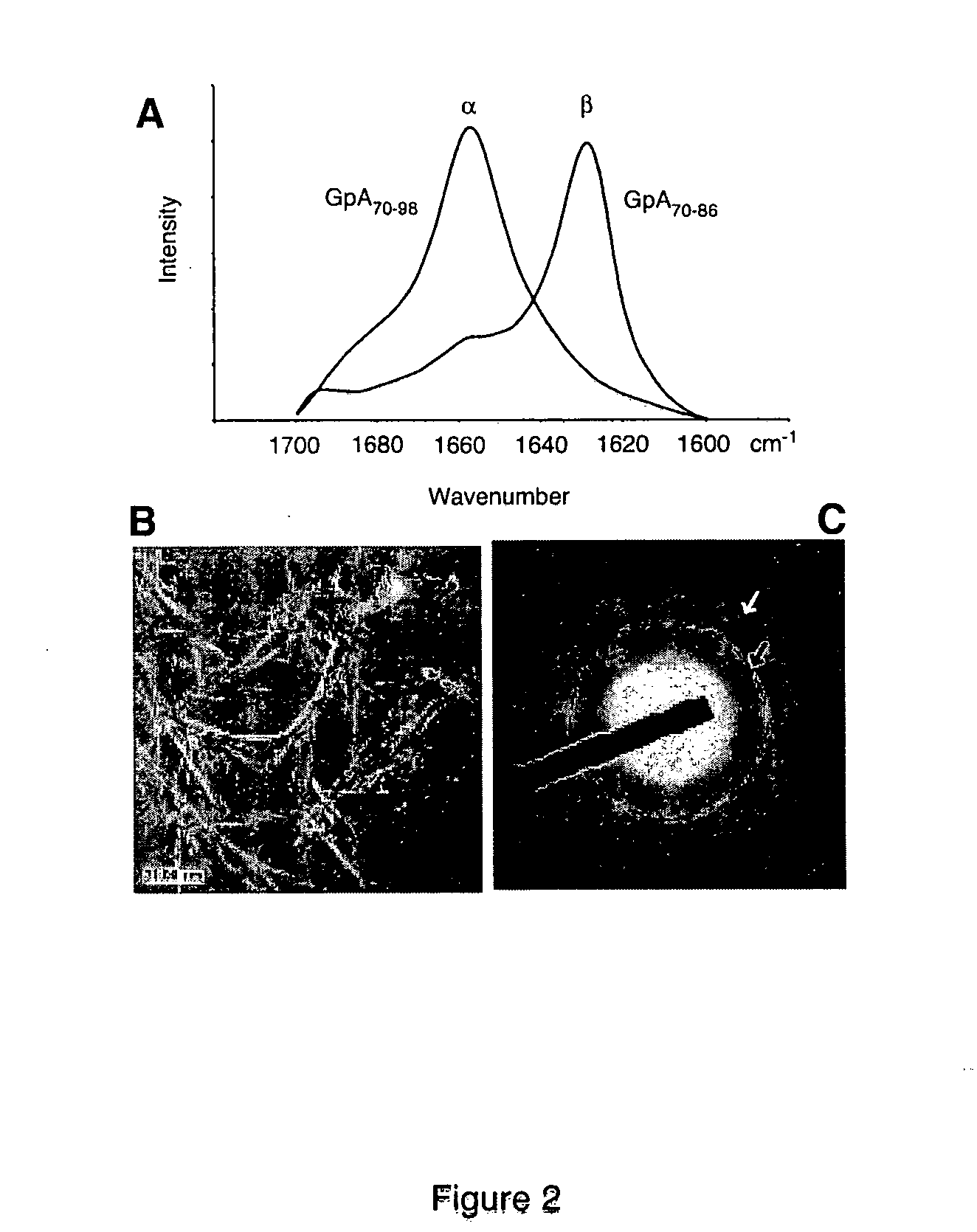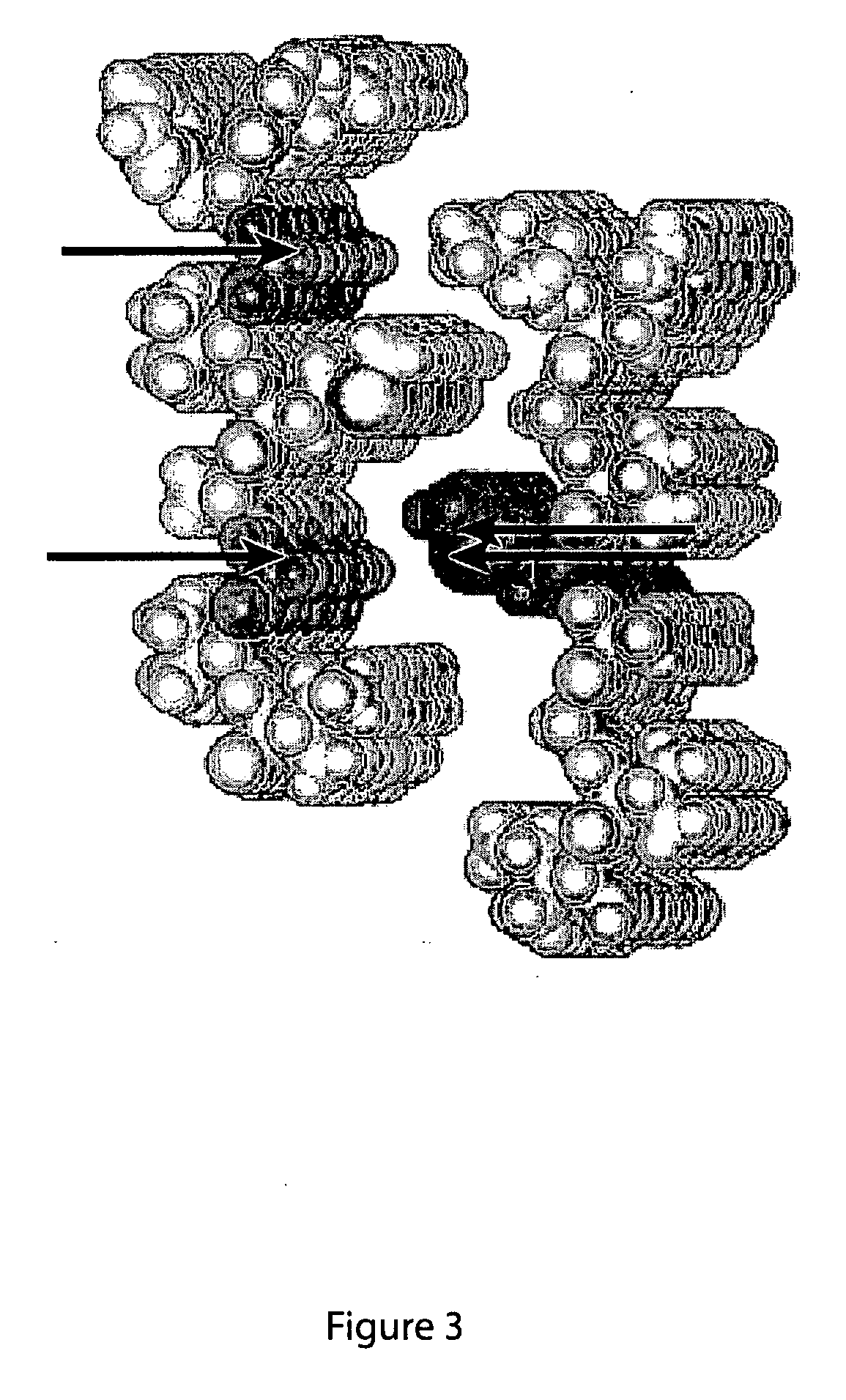Novel materials and methods for the treatment of Alzheimer's disease patients
a technology for alzheimer's disease and materials, applied in the field of new materials and methods for the treatment of alzheimer's disease patients, can solve the problems of loss of language skills, loss of memory, and inability to perform routine tasks, so as to improve bioavailability, reduce the degradation of proteins, and improve the effect of bioavailability
- Summary
- Abstract
- Description
- Claims
- Application Information
AI Technical Summary
Benefits of technology
Problems solved by technology
Method used
Image
Examples
example 1
NMR Spectral Studies Determining Aβ1-42 Packing Orientation
[0183] This example employs nuclear magnetic resonance (NMR) techniques to demonstrate that glycine promotes the formation of amyloid plaques by facilitating amyloid fibril binding. Although it is not necessary to understand the mechanism of an invention, it is believed that hydrophobic transmembrane peptide domains rich in glycine can spontaneously adopt a i-sheet structure and form fibrils (i.e., for example, amyloid fibrils). As discussed above, the secondary protein structure of a glycine-rich model transmembrane peptide (glycophorin A; GpA) has a sequence similar to Amyloid Protein Polypeptide (APP). One truncated GpA peptide mimics Aβ1-42behavior and was used as a model for these studies. This truncated GpA peptide (GpA70-86) corresponds to the transmembrane domain of glycophorin A (i.e., GpA70-98); a major protein in erythrocyte membrane.
[0184] In the experiments below, magic-angle-spinning (MAS) NMR was performed a...
example 2
SEQ ID NO:1 Prevents Amyloid Peptide Pnlymerizatinn
[0201] This example demonstrates the ability of an amyloid fibril inhibitor protein to prevent the polymerization of amyloid peptides into fibrils.
[0202] Amyloid fibril formation disruption was hypothesized to occur by an inhibitor protein's specific binding to the C-terminal sequence of Aβ1-42 (SEQ ID NO: 157) thereby preventing Met35-Gly37 β-sheet-to-β-sheet contact. An amyloid fibril inhibitor protein having the sequence RGTFEGKF-NH2 (SEQ ID NO:1) was selected for this experiment. One of skill in the art will realize that this sequence may have a free N-terminus while the C-terminus is protected. One face of an amyloid β-sheet comprises a first repeating amino acid sequence of GXaaFXaaGXaaF (SEQ ID NO: 161) wherein Xaa is any amino acid) and binds to the protein inhibitor's C-terminus with the bulky phenylalanine (i.e., F) side chains packed against Gly33 and Gly37. The other face of the β-sheet comprises second repeating amino...
example 3
Inhihition of Amyloid Fibral Polymerizatinn
[0208] This example presents data showing that SEQ ID NO: 1 inhibits amyloid fibril polymerization in a time and dose-dependent manner.
[0209] Amyloid fibrillization was measured by the fluorescence thioflavin T assay. Levine III, H, Methods in Enzymology 309: 274-305 (1999). The Aβ1-42 peptide was dissolved and fibrillization was followed over the course of two weeks by monitoring thioflavin T fluorescence. Hou et al., J. Am. Chem. Soc. in press (2004).
[0210]FIG. 6 shows the effect of SEQ ID NO: 1 (I1) when incubated with Aβ1-42 peptides at molar ratio of 1:20 over a six (6) day period. The effect of the inhibitor plateaus after three days and shown to be 70%±5 % effective in preventing fibrillization.
[0211] Inhibition activities were also measured by fluorescence intensity over time at the following molar ratios of Aβ1-42 peptide to SEQ ID NO:1 (I1) 1:0; 1:1; 1:5; and 1:20. (FIG. 7). The inhibition was compared with a protein fragment ...
PUM
| Property | Measurement | Unit |
|---|---|---|
| time | aaaaa | aaaaa |
| flow rate | aaaaa | aaaaa |
| speed | aaaaa | aaaaa |
Abstract
Description
Claims
Application Information
 Login to View More
Login to View More - R&D
- Intellectual Property
- Life Sciences
- Materials
- Tech Scout
- Unparalleled Data Quality
- Higher Quality Content
- 60% Fewer Hallucinations
Browse by: Latest US Patents, China's latest patents, Technical Efficacy Thesaurus, Application Domain, Technology Topic, Popular Technical Reports.
© 2025 PatSnap. All rights reserved.Legal|Privacy policy|Modern Slavery Act Transparency Statement|Sitemap|About US| Contact US: help@patsnap.com



